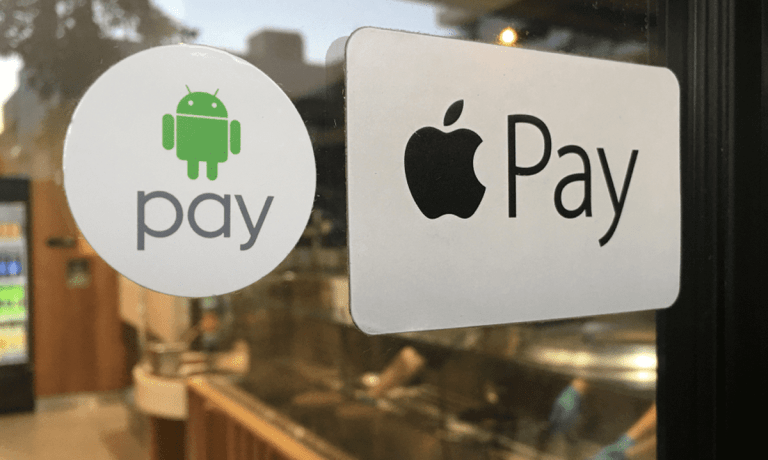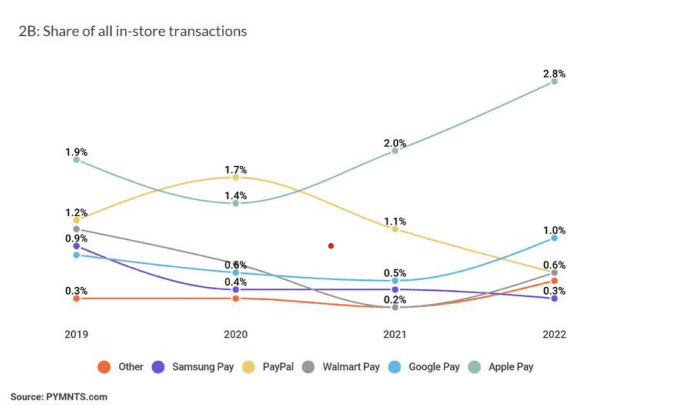
For Apple Pay, the tipping point is here.
Well, it might be here.
Or, if you look at PYMNTS’ own findings, we’re just beginning that ascent toward widespread adoption — and we’re a long way from critical mass.
The Wall Street Journal reported Thursday (Aug. 18) that eight years after its debut, Apple Pay is making significant inroads into commerce at large, due in part to Apple’s “patience” and “pestering” (per the WSJ’s reporting).
Citing data from Loop Ventures, the percentage of iPhones with Apple Pay activated was 50% in 2020 and now stands at 75%. Of course, activation does not mean transactions are necessarily occurring, just that the readiness is there. On the other side of the equation, 90% of retailers in the U.S. accept Apple Pay.
However, setting the WSJ’s article to one side and delving into PYMNTS’ data, we find the mobile wallet landscape is fairly minuscule, compared to overall transactions. And while Apple Pay dominates that mobile wallet space (we’ve termed the tech giant a big fish in a small pond), the base, thus far, is admittedly small. Taking Apple Pay’s penetration, overall, we see that the firm has a 2.8% share of all in-store transactions — a greenfield opportunity, to be sure, but hardly a seismic shift.

And the headwinds are firmly in place, tied to the cards — the traditional cards, now digital and contactless — that have been firmly rooted in commerce for decades.
As noted here over just the course of the past few days, Apple has been able to capture 48% of in-store mobile wallet payments in the U.S. and has far outpaced Google Pay’s 17% share. But then, consider the fact that overall, mobile wallets have less than a 6% share of in-person transactions.
The winner here has been, and still is, the contactless card, the tap-to-pay functionality that has garnered a 14% share of in-person payments — and as seen in the chart below, that percentage has been growing all through the pandemic. Throw in the physical, plastic cards themselves, and debit cards have snared 44% of transactions and credit cards have a 27% share, as measured by the second quarter of this year.

Reaching that desired critical mass will take some time, of course, as reflected in the activity we’ve observed on the ground and across more than 2,300 consumers. Even the younger generations, the most tech-savvy among us, have been increasing their use of mobile wallets as a means of checking out. But that activity is, as seen with all other cohorts, outpaced by cards. Gen Z consumers used mobile wallets for 9.3% of their in-store checkouts in Q2 2022, up from 7.3% in 2021.
Get the Report: Mobile Wallet Adoption: Apple Pay @8: Still The Big Fish In A Small Mobile Wallets Pond
The journey toward ubiquity seems a long one.